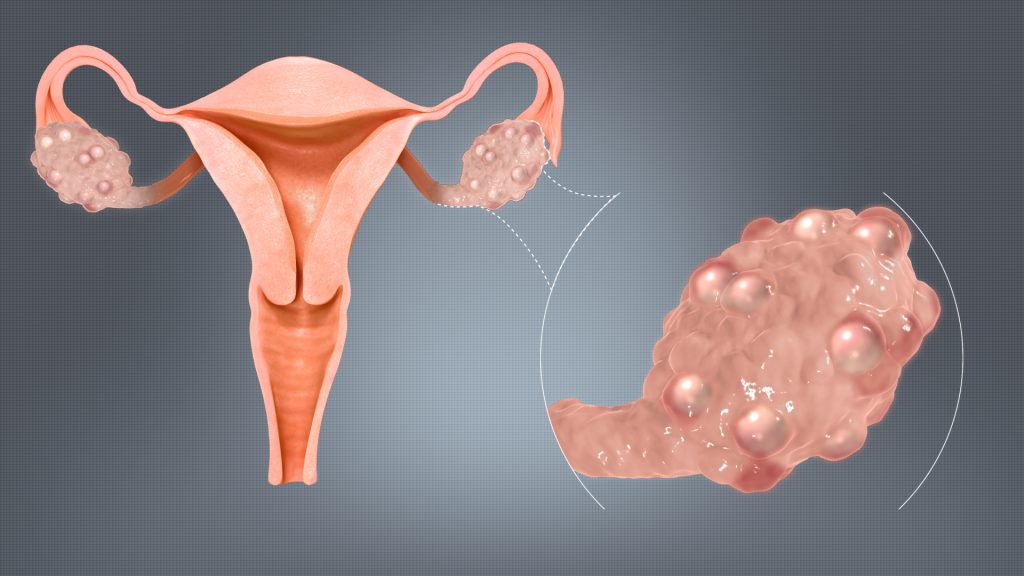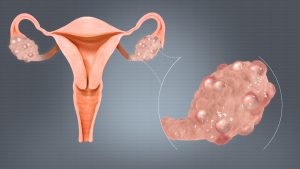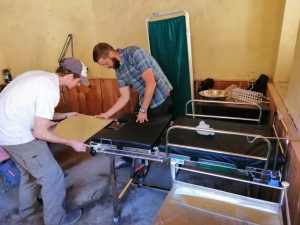
Polycystic ovary syndrome (PCOS) is a common hormonal disorder among women in the world, and cases of PCOs in Nepal are also seen in society.
It is believed to affect between four and 18 per cent of women globally. It is characterised by the presence of multiple cysts on the ovaries and a hormonal imbalance that can cause a range of symptoms, such as irregular menstrual cycle, excess hair growth, acne, obesity, skin tags, darkening of skin and fertility problems.
PCOS is one of the most common causes of female infertility and is also associated with an increased risk of other health problems, including diabetes, heart disease, and endometrial cancer. It is better to understand PCOS for a healthy lifestyle. This is imperative in Nepal as sexual and reproductive health is still taboo in Nepali society.
Prevalence of PCOS in Nepal

PCOS is more common and with higher prevalence rates in North America, Europe, and Australia. In the United States, it is estimated that between seven per cent and 10 per cent of women of reproductive age have PCOS. In India, the prevalence of PCOS is also relatively high, with estimates suggesting that it affects between 15 per cent and 20 per cent of women. There is also evidence to suggest that PCOS may be more common in certain ethnic groups. For example, research has shown that PCOS is more prevalent in Hispanic and African American women compared to non-Hispanic white women.
There is limited data on the prevalence of PCOS in Nepal. However, one study conducted in Kathmandu among 381 participants found that the prevalence of PCOS was 9.18 per cent. This indicates that there are chances of even more incidences of PCOS in Nepal than that mentioned in the study as the other parts of the country are far behind the capital city in terms of infrastructure, health care and education.
This also suggests that PCOS in Nepal may be a significantly major health problem as far as women’s health is concerned.
Underlying causes and cures

The main cause of the development of PCOS in genetically susceptible women is the stimulation of ovaries to produce a high amount of androgens, such as testosterone and androstenedione, by the release of excessive luteinising hormone and/or hyperinsulinaemia in women whose ovaries are sensitive to this stimulus.
PCOS is not directly responsible for any deaths, but it is associated with an increased risk of developing other health problems that can be life-threatening if left untreated. For example, women with PCOS have an increased risk of developing diabetes and heart disease, both of which can be deadly if not properly managed. Type 2 diabetes can lead to a range of microvascular complications such as kidney disease, neuropathy, and retinopathy, which are equally fatal.
The diagnosis of PCOS is typically based on the presence of at least two of the three criteria—irregular menstrual cycle, increased levels of androgens in the blood of a female and multiple cysts on the ovaries as seen on an ultrasound.
Other tests such as blood tests to measure hormone levels and a glucose tolerance test to assess insulin resistance are used as suggestive tests to confirm the diagnosis.
According to Dr Shraddha Lamsal, PCOS has no definitive cure, as of now. The best method for the management of PCOS is lifestyle modification, including a healthy diet and regular exercise along with the use of medications. This can help improve insulin resistance, regulate menstrual cycles and hormone levels, reduce the risk of other associated health problems as well as improve fertility.
Maintaining a healthy lifestyle and medication

Lifestyle modifications can help manage the risk of PCOS in Nepal and elsewhere. One of the major lifestyle modifications is eating a balanced diet. A balanced diet that is low in refined carbohydrates and trans fat and high in fibre can play a significant role to improve insulin resistance and reduce the risk of diabetes.
Then, regular physical exercise helps improve insulin sensitivity, regulate menstrual cycles, and promote weight loss. Likewise, proper stress management can minimise PCOS symptoms and may improve infertility. Sound and adequate sleep reduce insulin resistance and hormone imbalances.
Medications that may be used to treat PCOS in Nepal include:
- Oral contraceptives increase the level of androgen-binding globulin, which decreases the free testosterone, regulates the menstrual cycle and treats acne.
- Metformin improves insulin sensitivity and reduces the risk of type 2 diabetes mellitus.
- Clomiphene is a medication that stimulates ovulation and can improve fertility.
- Spironolactone has an antiandrogenic effect that blocks the effects of androgens and can help reduce excess hair growth whereas the topical cream eflornithine is used to reduce facial hair.
- In vitro fertilisation is recommended for women if the other measures are not effective.

























